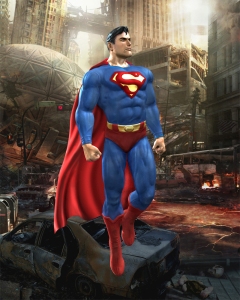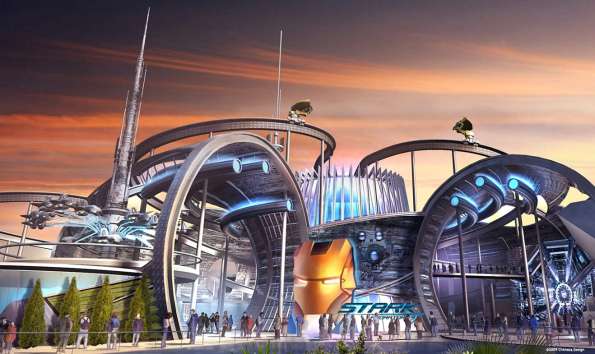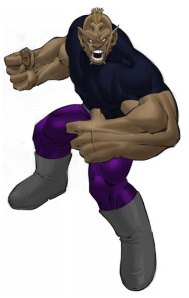
One of the first things you start to do when learning the basics of the Hero System is creating new characters, or make Hero System adaptations of characters from TV shows, movies, comic books etc. Another thing I have always loved to do is to grab ridiculous/absurd characters from old published adventures and breath new life into them. Once you become skilled in understanding and manipulating the system, you immediately understand when something in a write up just doesn’t work. While characters and modules for 5th edition and 6th edition are always checked and double checked before going to print, same thing could not be said for earlier editions. 4th edition had its good share of good examples of write ups, as well as some really fragile, absurd, plainly ridiculous ones, but it’s earlier editions of the game when things really cracked down into complete nonsense.
I admit have always had a problem with earlier editions of Champions, when Hero System didn’t even exist as a stand alone organism but there were just Champions, Danger International, Robot Heroes etc, which shared very similar mechanics. When I begun playing Champions the system was undergoing the transition between 3rd and 4th (also known as the Big Blue Book) editions, and while the mechanics weren’t changed dramatically, I could already notice that 3rd level (and previous) adventures somehow lacked a solid logic when dealing with character write ups and stat blocks. I opened old modules and could not fathom how the hell these characters were made: outrageously high characteristics, foci that were not foci, ex soldier villains without skills, heroes with unexplainable relations between powers and effects and so forth.
The adventures, by itself, might not have been that bad. Some of them are indeed legendary, and god knows how I love old D&D dungeon crawls and no-frills action adventures from earlier days of the hobby (even though I am definitely more of a storyteller-type DM than hack-and-slash adventuring and exploring one). However statting and converting characters for Champions, while extremely entertaining (and some would say where the game really gives its best), needs care and deep rooted logic. Hero is a highly “simulationist” system: it gives you all the tools you need to create the character you want, exactly the way you want it. By reverse engineering this logic however, you could define backward exactly how the character looks and behaves just by reading his character sheet. And that’s where I find early adventures lacking.
5th and 6th edition are brilliant on this side. The men behind the new Hero editions are possibly the greatest gurus of the system itself, which believe me, for a system like this one, it means a LOT. Their adventures are not just extremely detailed, but have extremely well formed character sheets, be it for NPCs or sidekicks or heroes. 4th edition was already almost there in general quality. You had everything from the catastrophic European Enemies to very well done sourcebooks like Champions Universe (by famous author Monte Cook). But for earlier editions, things were simply too undefined to find really complete, accurate characters like the ones we have today. My mission in a forthcoming series of posts is to bring these old adventures and character write ups to a vibrant new 5th edition format.
Champions was born in the early ’80s, a time when people made relatively low attention to congruence and realism. If a master villain conquered a state, very few would care to know exactly what would have realistically happened in a modern world. Which agencies, which bureaus, which department or organizations would take care of dealing with the alert, or what kind of standard equipment would the soldiers bring with them. Basically no one knew, or cared about geopolitics or international law enforcement. Things were very focused on the story and action, and nobody really cared for realism, neither the readers nor the writers, who seldom did very in depth research before writing a new story. The same thing happened with RPGs, and Champions adventures had its good share of oddities.
I personally found frustrating no one before 4th edition defined exactly against which parameters we should read the characteristics compared to real world examples. Is STR 20 human potential? Or is it 30? So is Captain America’s STR score a 18, a 20, a 28 or a 30? 4th edition gave us a first broad answer, giving us a glimpse on the matter, which become even more complicated with the Normal Characteristics Maxima disadvantage. While nobody really took care of defining parameters for home made adaptations (the topic has always been too hot even on official boards to give a definitive answer and even the writers never gave an official answer on the matter, preferring to give every master the power to define his own campaign standards), 5th edition gave us a good idea, and hell I can tell you how important it is to know what these characteristics mean when doing conversions or new characters. Have a look around and see how many write ups of spider man are there and how different they are from each other. Is this character I am statting stronger than Spider Man but weaker than colossus? If so then its STR should be something between 45 and 65. Get what I mean?
It has to be said that Champions has still its share of necessary evils even when balancing a broken write up, or making adaptation of fictional characters to make it work in a running game. If you are building a slow, strong super hero, despite your first reaction would be to leave him at SPD 2, DEX 8, you can’t really do that, unless you want to be beaten to death by mostly everybody you’ll ever meet. The mechanics call for some standardization which warps a bit the way you should choose the characteristics for your heroes. In a super-hero campaign a DEX of 18 is to be considered standard, and a SPD of 4 has to be considered barely OK for a slow, tough strongman, even if logic would suggest we’re talking about stats for a gold-medal olympic level martial artist. This is something that has always bothered me, despite the Champions genre book clearly states that the mere fact of being a mutant or having superpowers is enough of an explanation for “legendary” level characteristics. This statements means that if you are a mutant with the power to create exploding balls of colored light, you might as well have a DEX of 26, just like the greatest gymnasts in the history of mankind. Your body is not normal, so your reaction time is higher than normal as well. I know it does n0t sound too convincing, but it’s one of the few compromises you have to accept to play an effective Champions campaign.
Luckily this is a logic that applies only to Superhero campaigns, while in Fantasy, for example, or in heroic campaigns with non-superhuman people as characters, you can better follow realism and good sense.
My mission is to post a few brand new characters, conversions from other systems, but I will probably focus on adapting old characters to new editions, keeping in mind the logic and power levels of a standard Champions campaign.
I love the 5th edition layout, choice of fonts and all (as much as I hate the 6th edition one I admit) so I will probably use that one for these characters write ups. I will post the original character sheet, followed by a general critic, attach a straight adaptation of the character from the original to 5th edition, and then write a third stat block which is the revised, improved edition of the original one the way I would have done it. Follow me and you’ll understand what I’m talking about. Of course I am not a guru of this system so there might be weak points in the adaptations. If you want to give your opinion, feel free to comment each post.
Before starting a flame with Champions players which grew up with third editions that consider it to be the best editions of them all, I would like to say that 3rd edition rules were also different. Desolidification, END Reserve, Damage Resistance, and all Disadvantages in general worked quite differently from the way they work in 4th Edition and above (consider 4th, 5th, 6th editions are extremely similar and compatible, no D&D4E syndrome here). All that said, some conversions will be quite radical. I have to understand what the original writers meant while creating some powers, debug, check and add in every single sheet. This does not mean the original writer were stupid: they were writing for a different, unripe system in a time where players weren’t as picky as I am now on balancing and realism of every character. So don’t consider all these old write ups as disastrous, because for they time they were written, they might as well been OK.




